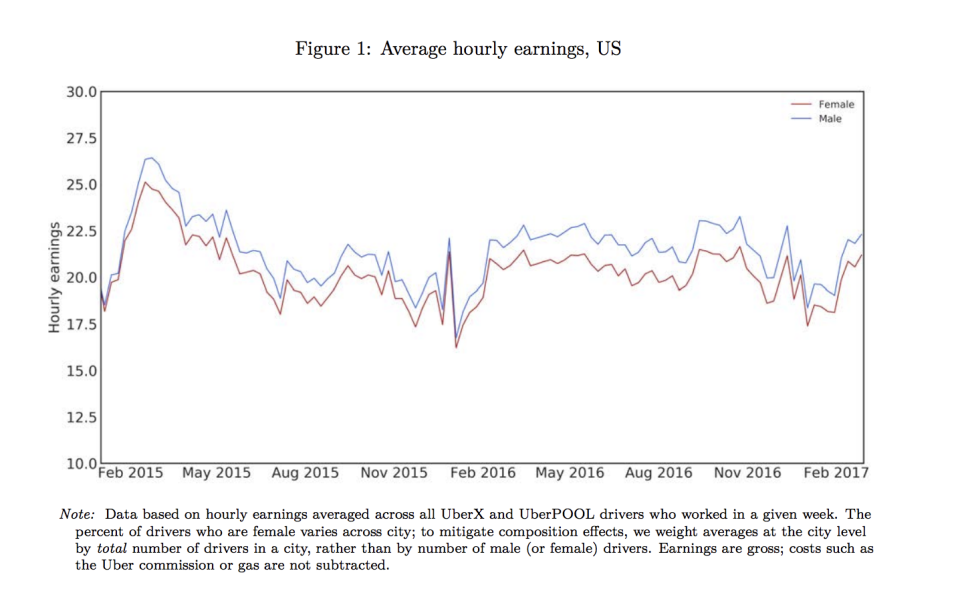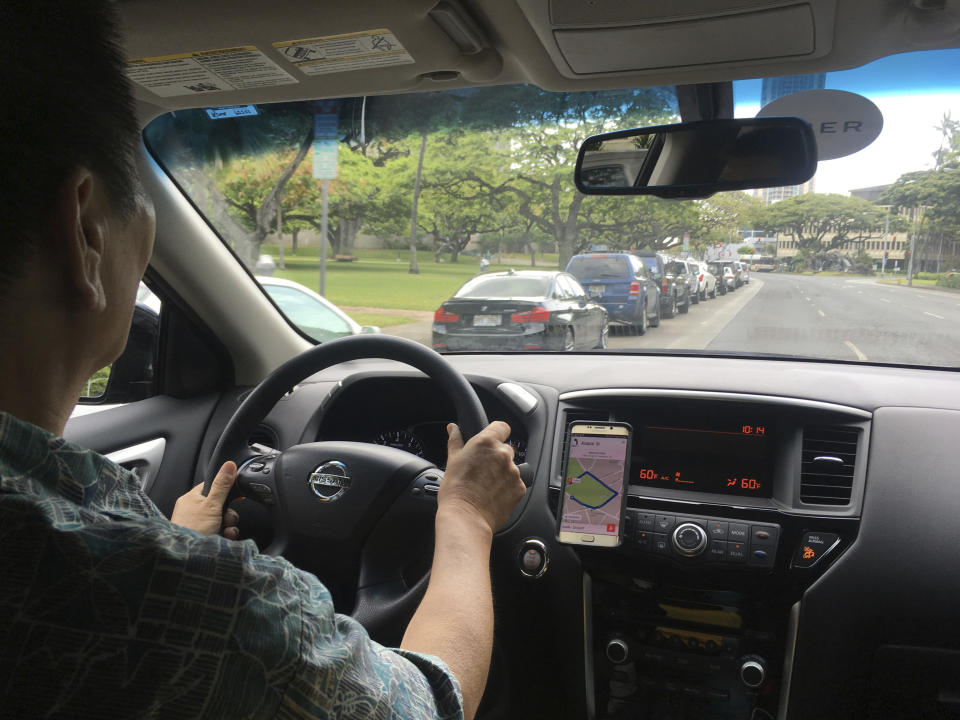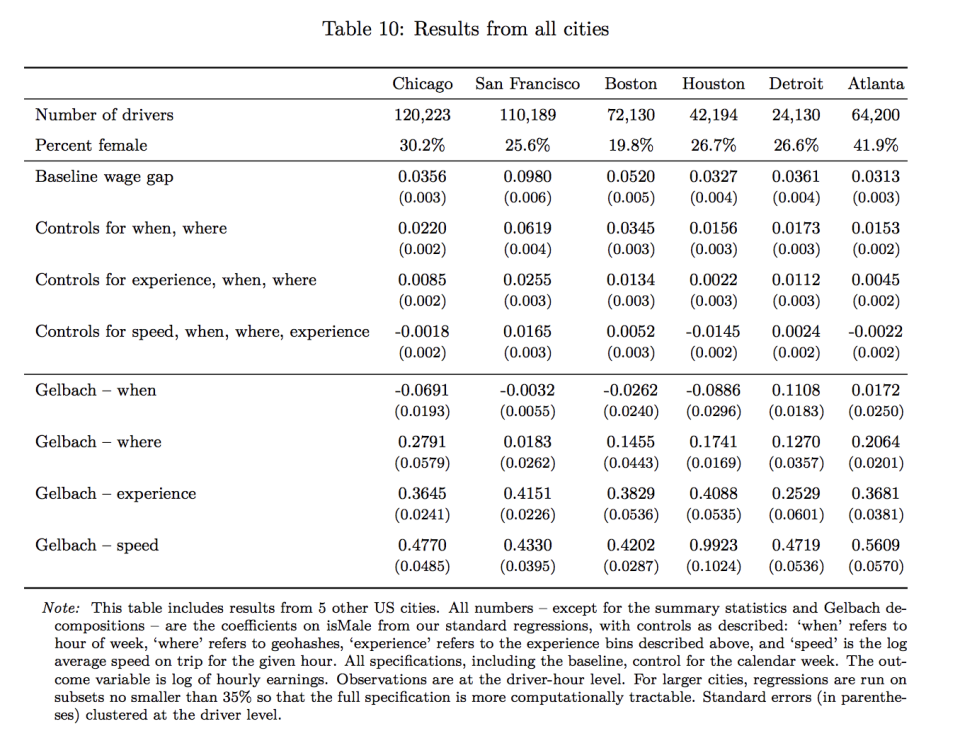Why male Uber drivers make more, according to researchers
A recent study found that male Uber drivers earn roughly 7% more per hour than women on average. Researchers ascribed the gender pay gap to male drivers being more risk tolerant, working in areas that were more lucrative and driving faster.
Researchers from Stanford University and the University of Chicago looked at Uber data of around 120,000 drivers from January 2015 to March 2017 and measured how much they were paid per hour, focusing their attention on drivers in Chicago. During that period, 30% of the drivers were female and 33 million driver hours were logged.
Stanford professor Rebecca Diamond, one of the study’s authors, asserted that the data allowed for a unique look at gender payment disparity on a particular job.
“We’re the first study to fully unpack the gender pay gap,” Diamond told Yahoo Finance. “Uber is really in this nice situation that they have all this detailed data … and we could quantify them in a very clean way.”
The study, which was first published in February as a working paper, is now published on the National Bureau of Economic Research (NBER) website.

‘Areas with higher crime and more drinking establishments’
One factor contributing to men earning more was risk tolerance.
Men drove 2.2% faster than women, according to the study, which the researchers claimed explained half of the earnings gap.
The study also found that 20% of the gender wage gap “can be attributed to differences in where male and female Uber drivers live.” Men tended to drive in “more lucrative locations,” as well as in “areas with higher crime and more drinking establishments.”
Women, meanwhile, consciously avoided “areas with a higher incidence of crime or where there is a higher likelihood of picking up intoxicated passengers,” which affected their “ability to earn money on Uber.” Men also drove “more during the late-night hours, while women drive substantially more on Saturday and Sunday afternoon.”

Men also drive more each week, getting more experience — hence more money by the hour — compared to women, who were more likely to stop driving with Uber.
“One of the biggest contributors to the gender pay gap is the role of experience on the job,” Diamond noted. “The labor supply leads to men having more experience [and] that can perpetuate a gender pay gap in many other contexts.”
Having looked at Chicago, the researchers replicated the study in other cities: San Francisco, Boston, Houston, Detroit and Atlanta. They found similar results in all places except Houston, where men actually made 1.2% less per hour. The study attributed this to Houston having many highways relative to other cities. Men appeared to take the highway route more often, giving them fewer chances to pick up passengers.
Ultimately, the researchers hope that the study will inspire more targeted policies that consider how men and women choose to use their time and help women move up the learning curve at the same pace as men do.

‘I think in some ways, this puts the “blame” on women’
One outside observer we spoke with questioned the significance of the study.
“It was a little surprising because the gig economy is supposed to be gender-neutral,” Charlene Li, principal analyst at research firm Altimeter, told Yahoo Finance. “In the study, they broke it down to reasons why, and it comes down to women who don’t want to work as much as men. But for the same job, is the pay the same? The study doesn’t show that.”
Li noted that she’d like to see a wage comparison for the same given period of time between male and female drivers. “I think in some ways, this puts the ‘blame’ on women for not wanting to work the same hours as how men would like to work.”

Li also added that Uber most likely worked on this study because it was having retention issues with female drivers.
In another part of the world, after Saudi Arabia lifted the ban on women drivers, Uber announced that it would open new facilities to recruit them. The company, before the ban, had a customer base that was 80% female, according to CNN.
Driving for a ride-sharing service “is a fantastic way to supplement or become your primary source of income,” Li said. “Because the pay is driven on an algorithm, if you are able to do a good job and get the job done, you get paid … there is nothing inherently gender- or behavior-oriented.”
READ MORE: The 10 most ‘family friendly’ jobs in the US with salaries over $75,000
